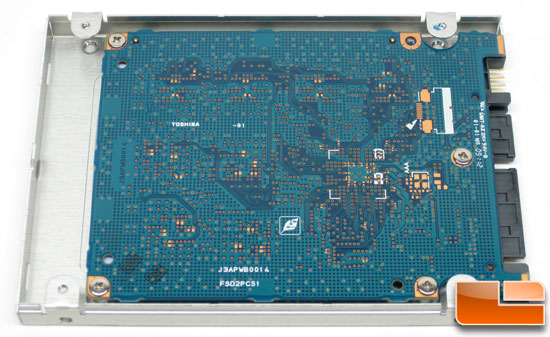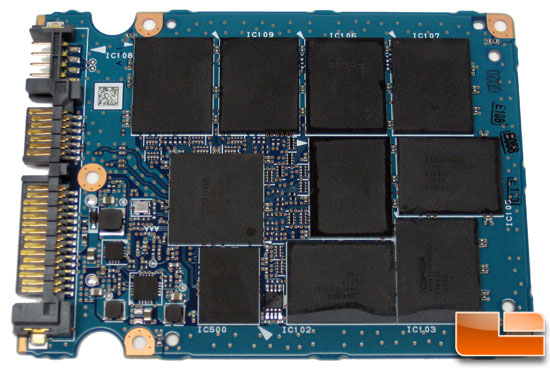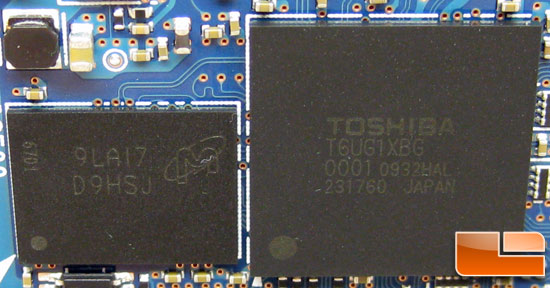Toshiba HG2 43nm 256GB Solid State Drive Review
Inside The Toshiba HG2 SSD
Since we have never seen what components are being used inside the Toshiba HG2 SSD we opened up our 256GB drive
to see what the
internals look like.

After removing the four Philips head screws that hold down the SSD cover plate we were able to lift it off and
see what we have inside. With the cover removed we see a bare PCB, but it looks familiar. One very interesting
thing was noticed once we opened up the SSD, and that is the fact that a
thermal pad is placed between the metal casing and the components on
the PCB. This helps transfer the heat away from the components, which
helps keep them cool and the large metal casing acts like a heat
spreader. This is something we have only seen on the second generation Kingston SSDNow V+ Series SSDs (SNV325-S2) that we reviewed a month ago to the day. It would appear that Kingston Technology sources the parts for their latest V+ series SSDs from Toshiba, so this drive should be identical.

Removing the PCB from the housing and flipping it over we can see Toshiba MLC NAND Flash memory chips, a Toshiba controller
and a Micron DRAM IC that serves as a cache chip. The eight double stacked TH58NVG7D7EBAK0 MLC NAND Flash memory chips that are being
used on the drive.
This drive with these chips is pretty much bullet
proof as it has an operating vibrating tolerance of 2.7G! The
non-operating vibration tolerance is 20G, which is amazing when you
think about how much force that would be.

The heart and soul of the drive would be the Toshiba
T6UG1XBG SSD controller pictured above. This controller is manufactured
on the 43nm process and includes all the latest features like native
TRIM support. Sitting next to the controller on the left hand side is a
single 128MB Micron 9LA17-D9HSJ DDR DRAM module that is used for cache,
which helps improve the drive’s performance.
Toshiba says that this
configuration on their 43nm HG2 drives have a sequential read speed of up to
230MB/s and up to 180MB/s on the maximum sequential write speed.

Comments are closed.